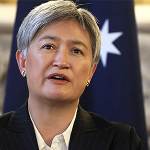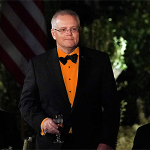Today is Anzac Day, arguably the most solemnly sacred day in the Australian calendar. At dawn on this day in 1915, as part of an Anglo-French operation, men of the Australian and New Zealand Army Corps landed on a rocky beach on Turkey’s Gallipoli peninsula in the face of murderous fire from Turkish defenders. Many died then and there. Many more were doomed to fight, suffer and die in a losing campaign, pitted against an enemy they scarcely knew, in a European war that could have, should have, been averted in July 1914.
The greatest Anzac military achievement of the Gallipoli campaign was a masterly overnight withdrawal, without a single casualty, after eight months of bloody stalemate. Today, Australians and New Zealanders therefore commemorate a significant defeat, not a glorious victory. In doing so, we reflect on, and acknowledge, the futility of war as well as the courage and sacrifices of all who fought, those who never returned, and those whose lives were forever blighted by their experience.
Young Australians are subjected to the ‘black armband’ school of history
This morning, I attended a dawn service at the war memorial in my Melbourne suburb of Mentone. Every year, people stream there, through the pre-dawn darkness and autumnal chill, to stand together in respectful silence in a brief, simple ceremony: the war memorial transformed into a catafalque, a short oration from a serving officer prefacing a recitation of Laurence Binyon’s haunting For the Fallen, followed by the Last Post, a minute’s silence, Reveille and the national anthem as the first rays of dawn light the sky, and the magpies’ cheerful dawn chorus greets the new day.
Our annual suburban ceremony is so simple, so personal, that it’s affectingly moving and powerful, just one of many hundreds of like dawn commemorations across Australia and New Zealand. But what strikes me, every year, is that those turning out before an autumn dawn are of all ages. This morning, there were many very young children joining their parents and grandparents, brought there to experience the solemnity and sadness of remembrance. There were also more than a few teenagers and young adults who joined with the entire crowd in showing their reverence and respect for the day, and for the fallen.
The respect shown by those members of Generation Z and Generation Alpha – those born between the late 1990s and the 2010s – doesn’t, however, sit well with the findings of a survey of Australians’ attitudes to Anzac Day released earlier this week. That survey found that the strength of connection to Anzac Day decreases by generation, and Generation Z is all but indifferent to it. Just 23 per cent of Gen Zs said they feel a strong connection to Anzac Day, and 33 per cent said they respect it but don’t feel it relates to them.
When asked whether they would ‘personally be willing to take part in the defence of Australia’, just 16 per cent of Gen Zs said they would. Unsurprisingly, these findings sparked a lot of comment, raising questions about what young people think of their country, and the world.
If these findings truly are representative of the attitudes of Australia’s Generation Z, it is no surprise, given the messages about their country to which they are exposed relentlessly.
From their first day of preschool, young Australians are subjected to what former prime minister John Howard labelled the ‘black armband’ school of history. They’re being sold a story by their schools and universities, their media, their popular culture, that the country in which they live is a country built on racism, misogyny and xenophobia. They’re told Australia’s settlement by the British was an act of genocidal colonialism and that, from Captain Cook onwards, the British empire was a malevolent evil that should never have ‘invaded’ here. They’re led to believe the only wars that mattered were so-called ‘frontier wars’ between colonists intent on taking land from, and killing, the Aborigines whose land it was – even though those skirmishes between Europeans and Aborigines were the exception and not the rule.
And they’re told that the values and freedoms for which generations of Australians fought and died, including liberal democracy, are false values, or else are obsolete in the age of the smartphone and instant gratification. They certainly struggle to understand why it was, in 1914, so many young Australian men and women in the prime of their lives answered prime minister Andrew Fisher’s call to defend the Mother Country ‘to the last man and the last shilling’, or even why Australia unhesitatingly joined Britain in the fight against Nazi tyranny in 1939.
Yet there is hope. In that same survey, two-thirds of the Generation Zs polled believed the Anzac legacy should be kept alive for future generations. As the attendance of so many young Australians at today’s Anzac Day ceremonies shows, reverence for the day and what it represents has not died in all our youth. Despite the dominance of bleak, black armband projections onto our young people of what it is to be Australian, the values of Anzac are being cherished, preserved and transmitted from generation to generation by Australian families whose forbears served, suffered and died in the service of their country. Even if our other institutions are not, parents are giving their children at least an awareness of the causes and freedoms their family members fought for.
As I witnessed in the cold Melbourne pre-dawn this morning, it’s the boys, girls and young adults who leave their warm beds to turn up at Anzac Day dawn services, and who march with surviving veterans proudly wearing their ancestors’ medals on their right breasts, who are keeping the spirit of Anzac alive. In time, they will transmit respect for their forebears’ sacrifices to their own children. At the going down of the sun, and in the morning, these young people will, thankfully, remember them.
Lest we forget.









